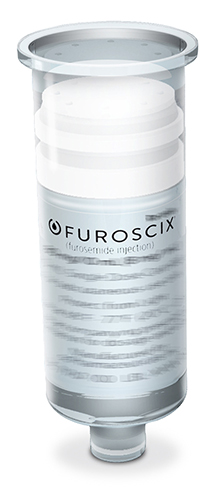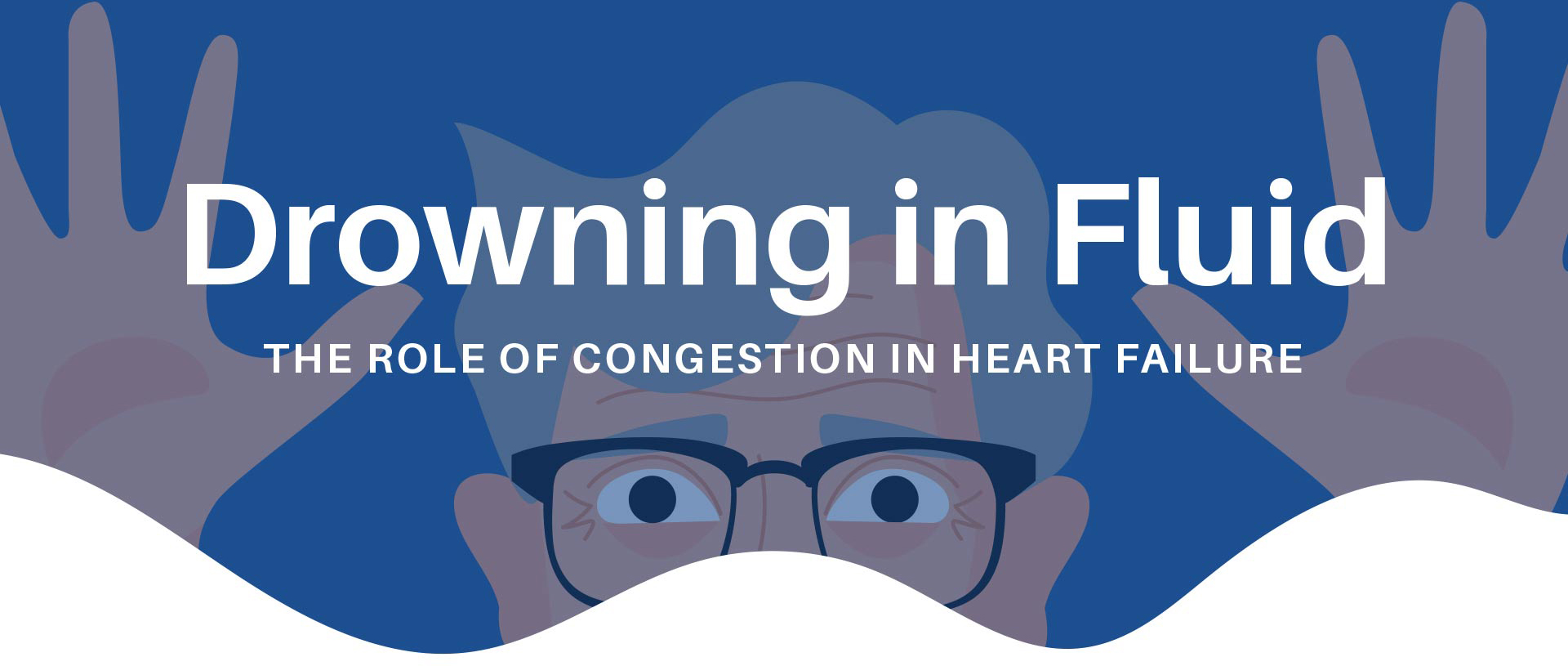
What We Do
FUROSCIX: Under development for the outpatient treatment of edema and congestion in patients with HF.
Furosemide was first approved for clinical use in 1964. A mainstay in heart failure treatment, furosemide is featured on the World Health Organization’s List of  Essential Medicines and represents over 90% of the IV loop diuretics utilized.1
Essential Medicines and represents over 90% of the IV loop diuretics utilized.1
HF affects approximately 6.5 million adults in the United States with approximately 1 million new cases identified and 75,000 attributable deaths, annually.9 Given the limitations of current diuretic therapy, we saw an opportunity for a new approach to HF treatment. We began exploring the possibility of delivering furosemide subcutaneously via an on-body infusor. If approved by the U.S. Food and Drug Administration, this alternative delivery system would allow for IV-strength furosemide diuresis in a non-acute care setting with the potential for patient self-administration. While efficacy and safety are paramount, we believe that the psychological and emotional well-being related to patient self-care are equally important.2
In this effort, we are developing FUROSCIX®—an investigational, proprietary, pH-neutral formulation of furosemide for subcutaneous administration via an on-body infusor for the outpatient treatment of edema and congestion in patients with HF. We anticipate resubmitting the FUROSCIX New Drug Application (NDA) in mid-2020. If approved, FUROSCIX would be the first-ever formulation of furosemide for subcutaneous administration in patients who display a reduced responsiveness to oral diuretics and who do not require hospitalization.
While FUROSCIX will not be appropriate for every patient, it has the potential to provide IV-strength diuresis with the advantages of at-home care.
FUROSCIX: Under development for the outpatient treatment of edema and congestion in patients with HF. CAUTION: Limited By Federal Law to Investigational Use. Illustrative representation only.
View our full infographic on the role of congestion in heart failure ›
The role of congestion in heart failure
Heart failure (HF) is a chronic syndrome whereby the heart is unable to effectively pump blood—and therefore oxygen—throughout the body. This impairment causes a domino effect in the body’s renin-angiotensin system that signals the kidneys to retain sodium and water, a condition known as congestion. Congestion can cause symptoms ranging in severity from problematic weight gain and swelling to severe fatigue and respiratory difficulties.
Congestion often is managed with a class of drugs called diuretics that work by helping the kidney remove excess salt and water. While oral diuretics may be sufficient in some cases, their absorption and effectiveness can decrease and become highly variable during worsening heart failure due to congestion.3 This can result in reduced bioavailability of oral diuretics, requiring many patients to subsequently be treated with intravenous (IV) diuretics, in an in-patient setting. Fluid overload is the most common reason for hospital admittance in patients with heart failure.4
For patients who do not need to be hospitalized for treatment, relying on prolonged stays in acute care settings solely for the administration of IV diuretics is not a cost-effective strategy, and it can place these patients at risk for increased mortality and morbidity. In the United States, the overall management of heart failure was associated with direct medical costs of $21 billion in 2012 and it is projected to increase 2.5-fold to $53 billion by 2030 with most costs (80%) related to hospitalization.5 HF affects approximately 11% of the Medicare population,6 but it consumes an astounding 33% of the annual Medicare Part A and B spending.7
The number of heart failure cases in the United States is expected to grow to over 8 million by 20308
Most HF patients with congestion have symptoms that develop slowly, providing a window for early intervention to potentially prevent the need for inpatient care.9
Learn more about our approach to stay ahead of the curve with our development of outpatient solutions ›
1 scPharmaceuticals data on file: Decision Resources HF Landscape and Forecast. December 2016.
2 Anderson AH, Martin LA, Mate KS. The Value of Teaching Patients to Administer Their Own Care. Harvard Business Review, June 2, 2017.
3 Lindenfeld J, et al. J Card Fail. 2010;16(6):475-539
4 Bennett SJ, Huster GA, Baker SL, Milgrom LB, Kirchgassner A, Birt J, et al. Characterization of the precipitants of hospitalization for heart failure decompensation. American Journal of Critical Care: an official publication, American Association of Critical-Care Nurses. 1998;7(3):168-174.
5 Heidenreich PA, Albert NM, Allen LA, et al. Forecasting the impact of heart failure in the United States: a policy statement from the American HeartAssociation. Circ Heart Fail. 2013;6(3):606-619
6 Fitch K, Engel T, Lau J. The cost burden of worsening heart failure in the Medicare fee for service population: An actuarial analysis 2017
7 Cost Burden of Worsening Heart Failure in the Medicare fee for service population, Milliman, 2017. Greene SJ, Mentz RJ, Felker GM. Outpatient Worsening Heart Failure as a Target for Therapy: A Review. JAMA Cardiology. 2018;3(3):3029-3039.
8 Benjamin EJ, Virani SS, Callaway CW, Chamberlain AM, Chang AR, Cheng S, et al. Heart Disease and Stroke Statistics-2018 Update: A Report From the American Heart Association. Circulation. 2018;137(12):e67-e492.
9 Greene SJ, Mentz RJ, Felker GM. Outpatient Worsening Heart Failure as a Target for Therapy: A Review. JAMA Cardiology. 2018 incomplete ref
CAUTION: Limited By Federal Law to Investigational Use. Illustrative representation only.
